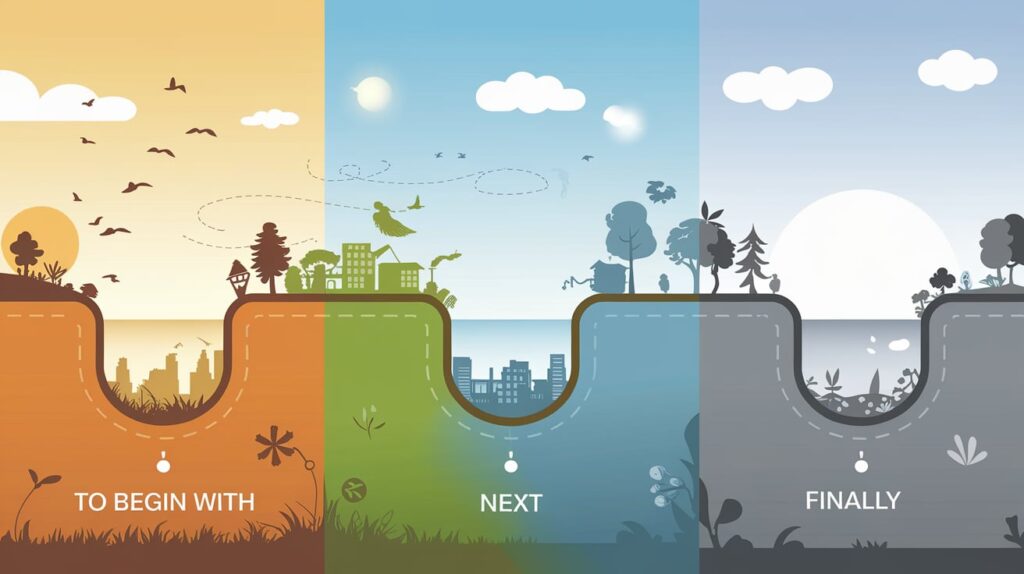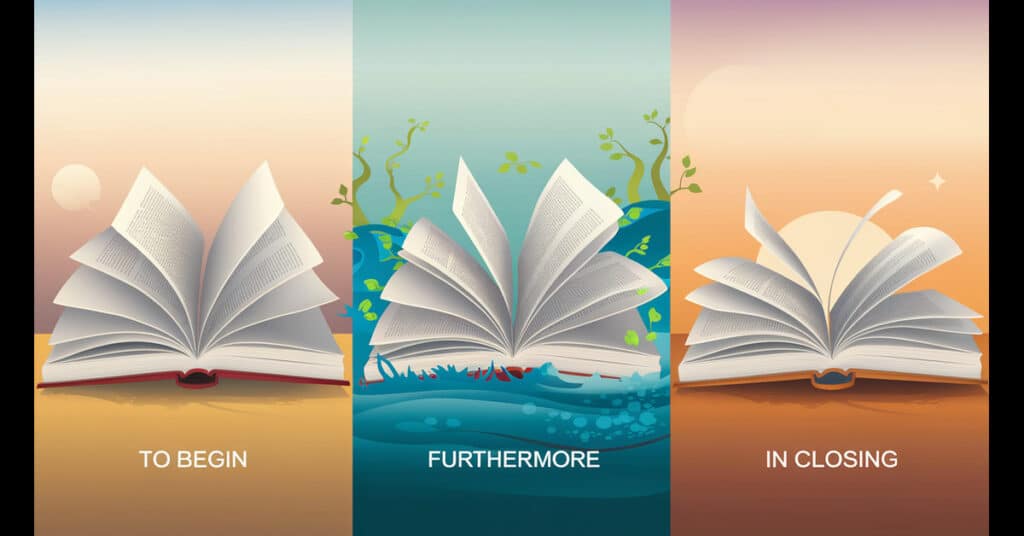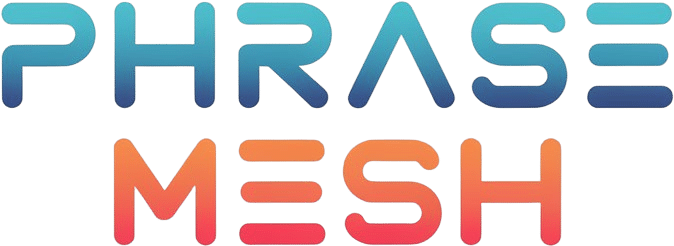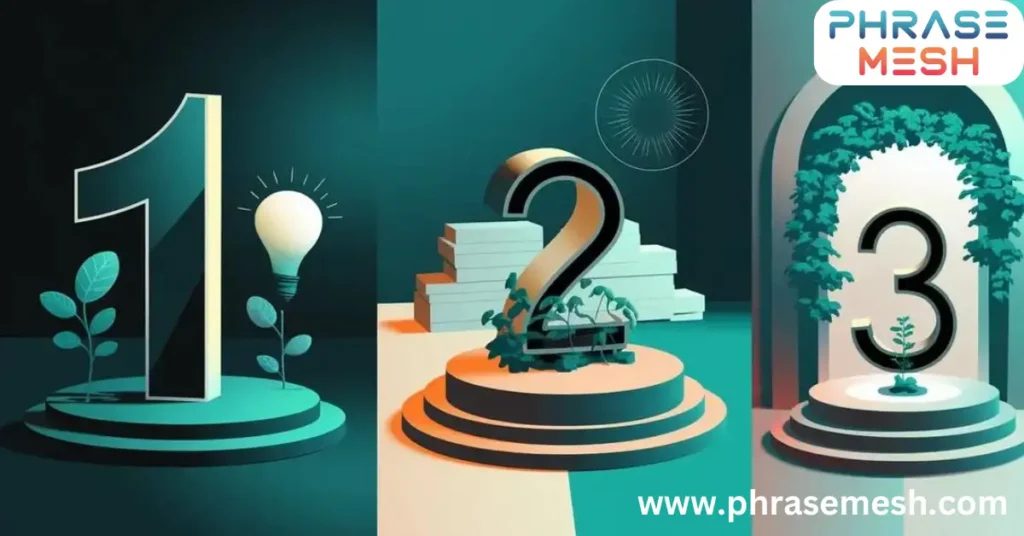Looking to upgrade your writing beyond the basic “Firstly Secondly Thirdly”? In this article, we’ll explore 20 fresh and engaging alternatives to these common transition phrases. Whether you’re crafting an essay, report, or blog post, you’ll find creative ways to organize your points more smoothly.
From casual to formal options, these substitutes for “Firstly Secondly Thirdly” will make your writing stand out. Say goodbye to repetitive transitions—let’s dive into more dynamic ways to structure your ideas beyond “Firstly Secondly Thirdly”!
What To Say Instead of “Firstly, Secondly, Thirdly”
Here are the 20 ways to say “Firstly Secondly Thirdly” :
- To Begin With, Next, Finally
- First and Foremost, Furthermore, Lastly
- At the Outset, Moving Forward, In Conclusion
- For Starters, Additionally, To Wrap Up
- The Initial Focus, Building on That, As a Final Point
- To Kick Things Off, Following That, To Sum Up
- The Main Point, Moreover, In the Final Analysis
- At the Forefront, Subsequently, As We Conclude
- The Primary Consideration, In Addition, Lastly But Not Least
- To Begin, Furthermore, In Closing
- To Start With, Moving On, In the End
- The Opening Gambit, Advancing Our Discussion, Closing Remarks
- At the Outset, Subsequently, To Cap It Off
- For Openers, What’s More, As a Final Note
- The Initial Consideration, Building Upon That, In Summary
- To Kick Off, Furthermore, To Wrap Things Up
- The Cornerstone, Additionally, As We Conclude
- To Begin Our Journey, As We Progress, Reaching Our Destination
- The Opening Statement, Delving Deeper, In Closing
- Setting the Stage, Moving Forward, The Final Act
1. To Begin With, Next, Finally

This trio offers a more conversational approach to organizing your thoughts. It’s perfect for informal emails or team updates.
Example:
To:
Subject: Q4 Campaign Brainstorm Results
Hey team,
I wanted to share the highlights from our brainstorming session:
To begin with, we’ve decided to focus on eco-friendly tech. Next, we’ll be reaching out to green influencers for partnerships. Finally, we’re planning a virtual product launch event.
Let’s dive deeper into each of these initial points in our meeting tomorrow.
Cheers, Alex
2. First and Foremost, Furthermore, Lastly
This sequence adds a touch of formality while maintaining a smooth flow. It’s ideal for business proposals or academic papers.
Example:
Dear Dr. Thompson,
I’m writing to propose a new research project on sustainable urban planning:
First and foremost, we’ll analyze current city infrastructures. Furthermore, we’ll develop eco-friendly alternatives. Lastly, we’ll create implementation strategies for city councils.
These subsequent steps will guide our research towards actionable solutions.
Best regards, Jamie Chen
3. At the Outset, Moving Forward, In Conclusion
This set works wonders for presentations or speeches, guiding your audience through your talk’s structure.
Example:
“Welcome, everyone. Today, we’re discussing the future of remote work.
At the outset, let’s look at current trends. Moving forward, we’ll explore potential challenges. In conclusion, we’ll discuss strategies for successful implementation.
By the end of this talk, you’ll have a clear roadmap for navigating the changing landscape of work.”
4. For Starters, Additionally, To Wrap Up
Here’s a casual yet effective way to structure your thoughts, perfect for team meetings or informal reports.
Example:
“Alright, gang, let’s recap our product launch strategy:
For starters, we’re rolling out a teaser campaign next week. Additionally, we’ve lined up some killer influencer partnerships. To wrap up, we’re hosting a virtual unboxing event.
Any questions about these opening remarks before we dive into the details?”
5. The Initial Focus, Building on That, As a Final Point

This sequence works well for complex explanations or step-by-step guides, helping your audience follow along easily.
Example:
To:
Subject: Welcome to Tech Corp – Your First Week
Hello and welcome!
The initial focus of your first week will be orientation and setup. Building on that, you’ll meet your teams and start basic training. As a final point, you’ll have a one-on-one with your manager to set goals.
This starting phase is crucial, so don’t hesitate to ask questions!
Best, HR Team
6. To Kick Things Off, Following That, To Sum Up
This lively trio is great for motivational speeches or project kickoff meetings, injecting energy into your communication.
Example:
“Hey everyone, excited to launch Project Phoenix!
To kick things off, we’re doing a company-wide survey. Following that, we’ll analyze the results and form action teams. To sum up, we’ll implement changes based on your feedback.
Together, we’re advancing towards a more dynamic workplace!”
7. The Main Point, Moreover, In the Final Analysis
Use this sequence when you want to emphasize the importance of your primary argument while providing supporting information.
Example:
Dear City Council,
Regarding the proposed downtown renovation:
The main point is that this project will boost local economy. Moreover, it’ll improve infrastructure and attract new businesses. In the final analysis, this investment will pay dividends for generations.
These following points underscore the project’s long-term benefits for our community.
Respectfully, Urban Planning Committee
8. At the Forefront, Subsequently, As We Conclude
This professional-sounding set is perfect for formal reports or academic presentations.
Example:
“Distinguished colleagues,
Our research on climate change mitigation:
At the forefront, we’ve identified key contributors to global warming. Subsequently, we’ve developed innovative carbon capture technologies. As we conclude, we’ll discuss implementation strategies and policy recommendations.
These closing thoughts will shape our approach to this critical issue.”
9. The Primary Consideration, In Addition, Lastly But Not Least
This sequence helps you emphasize the importance of each point while maintaining a hierarchical structure.
Example:
To:
Subject: New Safety Protocols
Team,
After our recent site audit:
The primary consideration is implementing new fall protection measures. In addition, we’re upgrading our equipment training programs. Lastly but not least, we’re introducing a real-time incident reporting app.
These changes will form the backbone of our enhanced safety culture.
Stay safe, Site Manager
10. To Begin, Furthermore, In Closing

This classic yet effective trio works well in various contexts, from emails to formal speeches.
Example:
“Esteemed shareholders,
Our annual report highlights:
To begin, our revenues have grown by 15% this year. Furthermore, we’ve expanded into three new markets. In closing, we’re projecting even stronger growth for the coming year.
These final statements reflect our company’s robust health and bright future.”
11. To Start With, Moving On, In the End
This sequence offers a casual yet clear structure, perfect for informal presentations or team updates.
Example:
“Hey team, let’s review our marketing strategy:
To start with, we’re launching a social media blitz next month. Moving on, we’ll roll out our new loyalty program. In the end, we’ll analyze the results and adjust our approach.
This preliminary stage sets the tone for our Q3 efforts.”
12. The Opening Gambit, Advancing Our Discussion, Closing Remarks
Use this sophisticated set for formal speeches or academic presentations to give your words extra gravitas.
Example:
“Distinguished colleagues,
Our research on artificial intelligence ethics:
The opening gambit of our study focused on current AI applications. Advancing our discussion, we examined potential ethical dilemmas. Closing remarks will address proposed regulatory frameworks.
These expanding ideas form the core of our comprehensive analysis.”
13. At the Outset, Subsequently, To Cap It Off
This trio works well for business proposals or project outlines, providing a clear roadmap for your audience.
Example:
To: Subject: Next Gen AI Startup Proposal
Dear Potential Investors,
Our NextGen AI startup plan:
At the outset, we’re developing a groundbreaking natural language processing algorithm. Subsequently, we’ll apply this tech to revolutionize customer service. To cap it off, we aim to license our solution to Fortune 500 companies.
These subsequent ideas outline our path from innovation to market dominance.
Best regards, Sarah Chen, CEO
14. For Openers, What’s More, As a Final Note
This casual yet effective sequence is great for blog posts or newsletter updates, maintaining a conversational tone.
Example:
“Hey green thumbs!
For openers, spring’s the perfect time to start your veggie garden. What’s more, it’s easier than you think! As a final note, we’re offering a 20% discount on starter kits this month.
Happy planting, and don’t forget to share your green triumphs with us!”
15. The Initial Consideration, Building Upon That, In Summary

Use this set when you want to emphasize logical progression in your arguments, ideal for analytical reports or strategic planning documents.
Example:
To:
Subject: AI Integration Strategy
Esteemed Board Members,
Our AI integration strategy:
The initial consideration is to assess our current technological infrastructure. Building upon that, we’ll identify key areas for AI implementation. In summary, we’ll create a phased rollout plan with clear KPIs.
This approach ensures a smooth transition towards AI-driven operations.
Regards, CTO Office
16. To Kick Off, Furthermore, To Wrap Things Up
This energetic trio is perfect for motivational speeches or sales pitches, injecting enthusiasm into your communication.
Example:
“Alright, team! Let’s talk about our new product launch:
To kick off, we’ve got a killer feature that’ll blow the competition away. Furthermore, our price point is unbeatable. To wrap things up, we’re backing this with a massive marketing campaign.
Get ready to dominate the market with these game-changing strategies!”
17. The Cornerstone, Additionally, As We Conclude
Use this sequence when you want to emphasize the importance of your primary point while providing supporting information.
Example:
Dear City Planners,
Regarding the proposed urban renewal project:
The cornerstone of our plan is creating more green spaces. Additionally, we’re integrating smart city technologies. As we conclude, we’ll discuss community engagement strategies.
These elements form the foundation of our sustainable urban vision.
Sincerely, Urban Development Team
18. To Begin Our Journey, As We Progress, Reaching Our Destination
This metaphorical sequence works well for long-term planning documents or educational courses, creating a sense of movement and progress.
Example:
“Welcome to ‘Mastering Digital Marketing’:
To begin our journey, we’ll explore the basics of SEO and content creation. As we progress, you’ll learn advanced analytics and conversion optimization. Reaching our destination, you’ll be able to create comprehensive digital marketing strategies.
19. The Opening Statement, Delving Deeper, In Closing
This formal yet dynamic set is ideal for legal arguments or detailed analysis presentations.
Example:
“Your Honor, esteemed members of the jury,
The opening statement of our case rests on the defendant’s alibi. Delving deeper, we’ll present forensic evidence supporting this claim. In closing, we’ll demonstrate how these facts create reasonable doubt.
This comprehensive approach will prove our client’s innocence beyond question.”
20. Setting the Stage, Moving Forward, The Final Act

This theatrical sequence adds drama to your structure, perfect for storytelling or creative presentations.
Example:
“Gather ’round, storytellers!
Setting the stage, our protagonist discovers a mysterious artifact. Moving forward, she unravels its secrets while evading dangerous pursuers. The final act sees her using the artifact to save her world from destruction.
This narrative arc will keep readers on the edge of their seats!”
Wrapping It Up
In conclusion, while Firstly Secondly Thirdly are well-established tools for organizing ideas in writing, there are countless ways to maintain clarity without using these specific transitions repeatedly. Writers often rely on Firstly Secondly Thirdly to guide readers through a structured argument, but overuse can make your writing predictable. By incorporating alternative transitions, you can bring variety to your work while still ensuring a clear flow of ideas. This helps keep your audience engaged and adds a level of sophistication to your content.
That said, Firstly Secondly Thirdly remain effective in formal contexts or when a straightforward approach is required. However, phrases like “To begin with,” “Next,” “Furthermore,” and “Finally” can offer a fresh way to sequence points without losing coherence. These alternatives help maintain the logical flow but prevent the writing from becoming monotonous. While Firstly Secondly Thirdly may feel like the go-to choice, the added flexibility of other transitions can enhance your writing style.
Ultimately, it’s about balance. While Firstly Secondly Thirdly are useful for clear and structured writing, they don’t have to be your only tools. Mixing in alternative transitions gives your writing a dynamic and polished feel. So, as you wrap up your ideas, remember that while Firstly Secondly Thirdly have their place, diversifying your language will elevate your work and leave a lasting impression on your readers.




